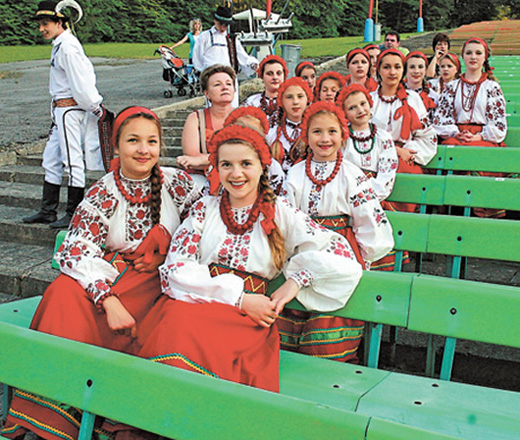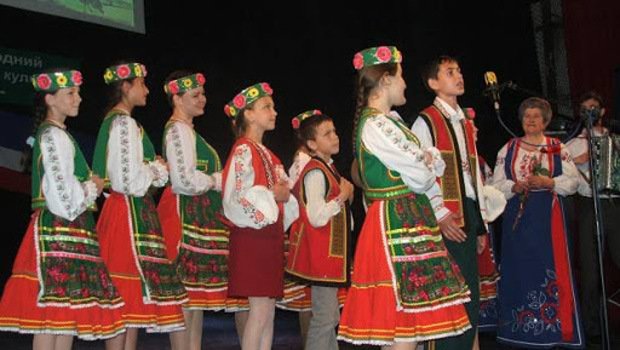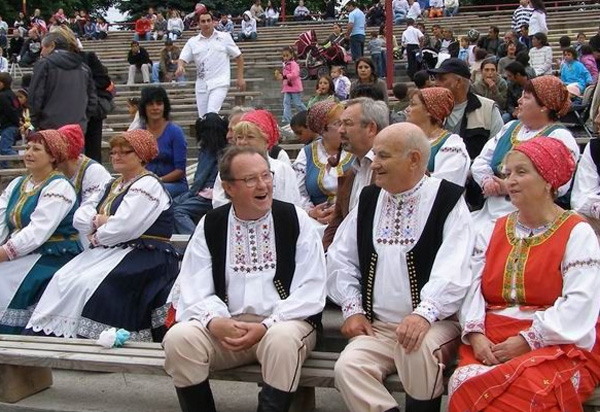Ruthenians
Ruthenians. A historic name for Ukrainians corresponding to the Ukrainian русини; rusyny. The English ‘Ruthenians’ (sometimes ‘Ruthenes’) is derived from the Latin Rutheni (singular Ruthenus), which also gave rise to the German Ruthenen and similar words in other languages. Originally the Latin name Rut(h)eni was applied to a Celtic tribe of ancient Gaul (their town Segodunum later became known as Rodez). The name Rutheni came to be applied to the inhabitants of Kyivan Rus’ as a result of the medieval practice of giving newly encountered peoples the names of extinct ancient peoples. Boris Unbegaun has suggested that the attested Latin Rucenus, a rendering of the Old Ukrainian rusyn, was instrumental in the selection of the name Ruthenus. The first use of the word Ruteni in reference to the inhabitants of Rus’ was in the Annales Augustiani of 1089. For centuries thereafter Rutheni was used in Latin as the designation of all East Slavs, particularly Ukrainians and Belarusians. In the 16th century the word more clearly began to be associated with the Ukrainians and Belarusians of the Polish-Lithuanian Commonwealth as distinct from the Muscovites (later known as Russians), who were designated Moscovitae.
After the partitions of Poland (1772–95) the term ‘Ruthenian’ underwent further restriction. It came to be associated primarily with those Ukrainians who lived under the Habsburg monarchy, in Galicia, Bukovyna, and Transcarpathia. In 1843, at the request of the Greek Catholic metropolitan of Halych, Mykhailo Levytsky, the Austrian authorities established the term Ruthenen as the official name of the Ukrainians within the Austrian Empire. In the 1870s the central-Ukrainian political theorist Mykhailo Drahomanov, as well as his Galician disciples Ivan Franko and Mykhailo Pavlyk, used the term rutentsi (a Ukrainianized version of Ruthenen) to denote narrow-minded, provincial, and Habsburg-true members of the Galician Ukrainian intelligentsia. Although the term Ruthenen remained in official use until the collapse of the Habsburg monarchy in 1918, Galician Ukrainians themselves began to abandon that name (from around 1900) and its Ukrainian equivalent, rusyny, in favor of the self-designation ukraintsi (Ukrainians).
In the last decades of the existence of the Habsburg monarchy there was a massive wave of Ukrainian emigration from there to the Americas. In their new countries the emigrant Ukrainians were often referred to and referred to themselves as ‘Ruthenians.’ In the interwar era the name ‘Ruthenian’ became even more restricted: it was generally used to refer to the inhabitants of Transcarpathia and to Transcarpathian emigrants in the United States. Since the Second World War the term ‘Ruthenian’ has been used as a self-designation almost exclusively by descendants of Transcarpathian emigrants in the United States, but since the 1970s even they have begun to abandon it in favor of the designation ‘Rusyn’ or ‘Carpatho-Rusyn.’ In official Catholic ecclesiastical language the term Rutheni was used in a wide sense, to denote all East Slavs of the Eastern church rite (Ukrainians of Galicia and Transcarpathia as well as Belarusians) until the early 1960s. Since then the term Rutheni has been used to refer only to Byzantine rite Catholics of Transcarpathian origin in the United States.
In 1991 the government of Slovakia recognized Ruthenians as a distinct national minority. The regional variation of Ukrainian, after several years of study, was proclaimed a new Slavic language in 1995 by the Rusyn Renaissance Society of Slovakia.
John-Paul Himka
[This article was updated in 1996.]




.jpg)